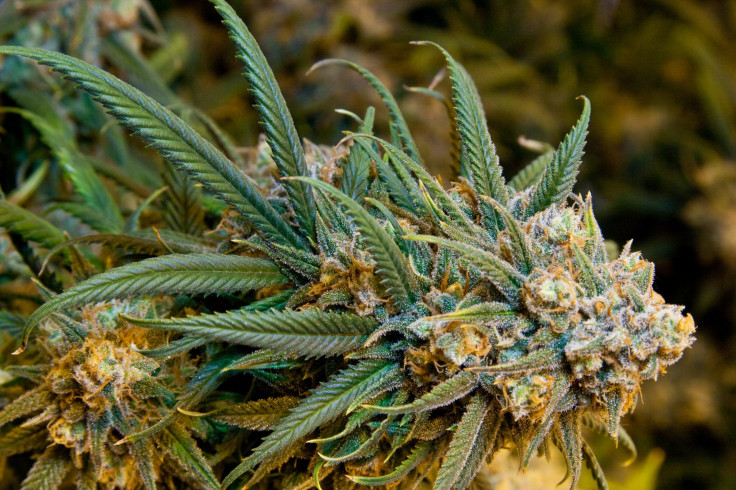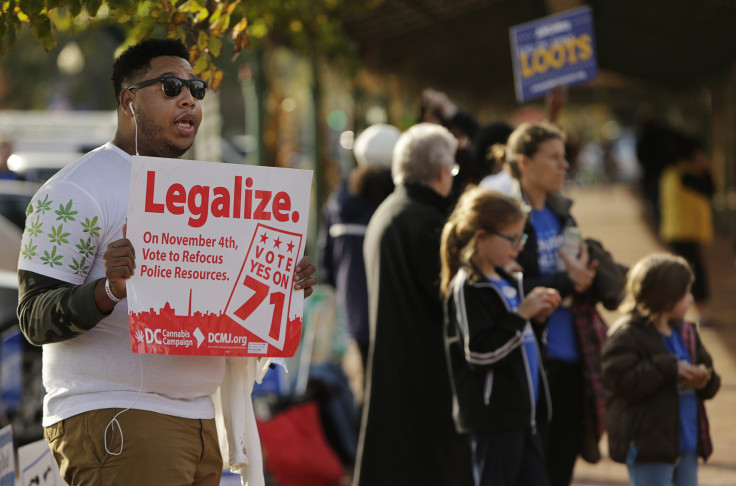Opinion: Marijuana Legalization In Washington, DC Serves As An Experiment With The In-Between

Adam Eidinger is passionate about hemp. So much so that he opened up Washington, D.C.’s first head shop, Capitol Hemp, in April 2008 — a second one opened a bit later. It was a thriving business for Eidinger and co-owner Alan Amsterdam, who employed 10 people, providing health benefits and the wages to be able to afford their own homes. Along with that, the business had generated over $300,000 in tax revenue (more than all medical dispensaries to date, Eidinger said), and had even sponsored the DC Rollergirls and donated to local police and fire unions. Among a slew of hemp items Capitol Hemp sold were jalapeño hemp pretzels, Dr. Bronners hemp soap, and hemp clothing and shoes.
But Capitol Hemp also sold custom-made, artisanal water pipes (bongs, if you smoke weed) and other marijuana paraphernalia. Hoping to circumvent paraphernalia laws, like most shops around the country, Eidinger and his partner Alan Amsterdam never sold to people who mentioned marijuana. But D.C. police saw it differently, and on the night of Oct. 26, 2011, they raided both stores simultaneously, seizing $350,000 worth of product and slapping Eidinger and Amsterdam with charges of intent to sell drug paraphernalia. For six months, they fought with prosecutors, eventually coming to a deal in which they were forced to close both shops to avoid prosecution; they even got their product back.
Defeated, Amsterdam moved up to Maryland where he opened his own shop under a different name. Eidinger, on the other hand, frustrated by the entire ordeal, decided he was going to change the law. On Nov. 4, he did.
Washington (Sort Of) Just Legalized Weed
Initiative Measure #71 was approved by over 69 percent of D.C. voters in Nov. 4th’s midterm elections. Supporters of the initiative and the campaign for its approval, the D.C. Cannabis Campaign (DCMJ 2014), whose chairman is Eidinger, called the measure the “Legalization of Home Cultivation and Possession of Minimal Amounts of Marijuana for Personal Use Act.” Under the new law, D.C. residents aged 21 and over will have the right (this isn’t set in stone just yet, but more on that later) to possess up to 2 ounces of marijuana outside of their home, grow up to three mature plants in their home and keep it for personal use, and give but not sell what they produce. There won’t be pot shops (yet), and public use is still very illegal. The system’s appropriately named “grow and give.”

What D.C. has approved is really just full decriminalization. Pot dispensaries, growers, and any other for-profit business that you’d find in Colorado or Washington, where marijuana was legalized in 2012, won’t set up shop in D.C. because of the Home Rule Act, which doesn’t allow local initiatives to allocate funds. Thus, D.C. finds itself in a position where it’s not allowed to spend money on building a “tax and regulate” marijuana system, at least not yet. It also makes legalization in D.C. much different from Washington and Colorado, and even Oregon and Alaska, whose legalization will resemble the former two.
‘Big Marijuana’ Doesn’t Have To Exist
Legalization in D.C. will serve as a litmus test for the rest of the nation. Opponents of ending marijuana prohibition often cite “big marijuana” as a major fear. Mass marketing, advertising, and storefronts full of marijuana are among these fears. Big corporations will supposedly swoop in for a piece of the marijuana cake (edibles, anyone?), and mislead consumers in a predatory manner. They worry that legalization “opens the door to self-harm.”
But really, big alcohol already does all of this. It’s not uncommon for TV commercials during sporting events to be about some kind of alcohol, and they often appear back-to-back. Our society has promoted drinking to excess, making it no surprise that alcohol has become the third leading cause of preventable death in the U.S., killing 88,000 people annually, and accounting for 31 percent of all driving fatalities. It’s also contributed to higher rates of sexual assault, rape, general violence, health problems.
Eidinger sees this as a double standard among opponents of legalization, saying this constant bombardment of alcohol-related content “encourages destructive alcohol use to underage kids.” He says the most important aspect of marijuana legalization will be how we market it, and that caution is imperative. “I would like to see a prohibition on TV ads for alcohol and cannabis like there are for tobacco on public airways,” he told Medical Daily. Just like alcohol, he admits there’s some evidence marijuana is harmful to teenage health.
Why Initiative 71 Is A Better Approach, For Now
Under initiative 71 as it now stands, marijuana use will most likely be similar to how it’s been: out of sight and out of mind. It’ll be a middle ground between full-on legalization and prohibition, and will give opponents just as much as supporters throughout the country an opportunity to see how legalization pans out.
It’ll be a slow process, no doubt, because D.C. operates under different laws than the states. Under the Home Rule Act, Congress must review any laws passed by D.C.’s Council. Council Chairman Phil Mendelson said he expects to submit it between December and January — he’s going to treat it like any other bill, he told Eidinger. Once he submits it, Congress has 30 to 60 days to either pass or override the law. This stipulation, however, has left pretty much everyone following the legislation wondering, will they? Chances are they will.

“It’s apparent with passing Initiative 71 that legalization is what people want, possibly even nationally,” Eidinger said. “Interfering with Initiative 71 could harm the larger GOP effort to regain the White House in 2016. To do so shows inconsistency with their stance on state rights, federal authority, and personal freedom.”
Assuming Congress approves the bill, it would still take up to two years for any kind of tax and regulate system to emerge. In Colorado, it took a year and three months, during which time weed could be grown and used recreationally. But with zero farms or a proper climate to supply D.C. with ample marijuana — federal law prohibits transporting it over state lines — it could take even longer to implement taxation and regulation.
Inevitably, all states that legalize weed will have to implement a “tax and regulate” system. Under D.C.’s initiative, there’s no quality control when it comes to the weed being used. It will still most likely be sold by dealers with little regard for a child’s age, and there’s a good chance kids will be charged and jailed for possession. Setting up a proper system will ensure kids don’t get their hands on weed in the first place — at least not at the discretion of pot shops — because the consequences would be just as bad as selling them alcohol or cigarettes.
Earlier this week, a Gallup poll found that 50 percent of Americans supported the legalization of weed (46 percent opposed it). These findings highlight a growing trend since at least 1996, and if they’re any indication, the country may eventually legalize weed altogether. How long that takes is unknown, but in the meantime, Washington, D.C. gives them something interesting to watch.
Legalizing it, and then taking it slow, could be a good model to follow.
Published by Medicaldaily.com



























